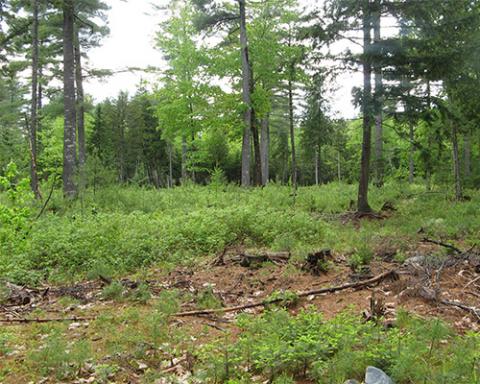Classifying and Evaluating Partial Harvests and Their Effect on Stand Dynamics in Northern Maine

The Acadian Forest of Maine, which is located in all but the southwestern corner of the state, has seen a shift from intensive, large-scale forest management operations to smaller, more restricted partial harvests. Shortly after implementing a Forest Practice Act in 1989, clearcutting in Maine decreased dramatically from close to 50% in 1989 to about 5-7% of the total harvest area today. With more widespread partial harvesting in recent years, forest dynamics and potential wood supply could change dramatically over time.
Unfortunately, the harvest reporting required of landowners by the Maine Forest Service does not provide much information, and detailed data on extent and characteristics of the area potentially available for different harvest types is lacking. Using both field measurements and remote sensing data, NSRC researchers quantitatively characterized harvesting trends across northern Maine.
Researchers found that occurrence and intensity of partial harvest operations are driven both by stand- and tree-level attributes such as ownership, stand density, and bioclimatic conditions and species, size, and competitive status of individual trees. Maps and developed models revealed that regional differences in factors that influence harvest practices, such as ownership, management legacy, and bioclimatic conditions, caused regional differences in post-harvest conditions. Researchers incorporated new submodels into the Acadian Variant of the Forest Vegetation Simulator (FVS-ACD) which will improve prediction accuracy of stand-level post-harvest conditions and dynamics. Findings suggest that harvesting in northern Maine might be less opportunistic and short-term driven than generally perceived, highlight the complex factors that influence harvesting patterns, and provide a framework for better representing harvest behavior in future wood supply projections.
